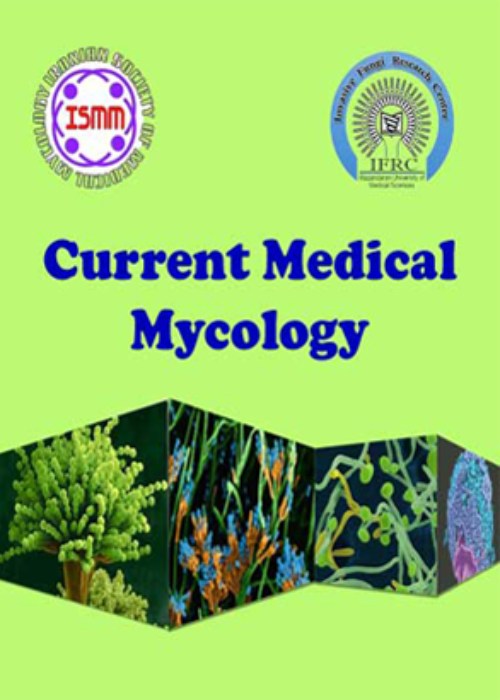Fractionation and identification of the allergic proteins in Aspergillus species
Author(s):
Abstract:
Background and
Purpose
Allergy is an undesired immune response to non-pathogenic agents. However, some opportunistic microorganisms such as fungi can also cause allergy. Among those fungi, hyphae form of Aspergillus strains including A. fumigatus, A. flavus, and A. niger could be mentioned. In this study, we aimed to separate allergic proteins from Aspergillus strains and determine their identity.Materials And Methods
Standard species of Aspergillus strains were cultivated in optimized conditions and the mycelium was separated by centrifugation. The fungal cells were lysed through physical methods such as freezethawing and grinding to prepare a suitable protein extract. The protein concentration was measured by Bradford method and the electrophoretic pattern of the extract was determined by sodium dodecyl sulfate polyacrylamide gel electrophoresis (SDS-PAGE). The proteins were fractionated by ammonium sulfate precipitation and anion exchange chromatography using fast protein liquid chromatography (FPLC) system. The IgE immunoreactivity of the sensitized patients and controls was studied using the fractionated proteins by enzyme-linked immunosorbent assay (ELISA). Following SDS-PAGE, proteins were electrotransferred onto polyvinylidene difluoride (PVDF) membranes and the strips were blotted with allergic patient's and control's sera. The immunoreactive bands were excised from colloidal coomassie-stained SDS-PAGE gels and studied by mass spectroscopy methods.Results
Among the studied species, A. fumigatus showed stronger IgE reactivity and more IgE reactive protein bands than others did. The proteins with higher molecular weights showed stronger immunoreactivity in Western blotting. Receiver operating characteristic curve analysis demonstrated a correlation between the results of the applied ELISA methods. One of the most prominent IgE reactive proteins was confirmed to be 45 kDa mycelia catalase.Conclusion
Our findings confirmed that high molecular weight proteins might play a major role in allergy and IgE reactivity to Aspergillus species. Moreover, the results showed that precipitation and chromatographic methods are applicable for fractionation of fungal proteins such as mycelial catalase.Keywords:
Language:
English
Published:
Current Medical Mycology, Volume:2 Issue: 4, Dec 2016
Pages:
37 to 45
magiran.com/p1731880
دانلود و مطالعه متن این مقاله با یکی از روشهای زیر امکان پذیر است:
اشتراک شخصی
با عضویت و پرداخت آنلاین حق اشتراک یکساله به مبلغ 1,390,000ريال میتوانید 70 عنوان مطلب دانلود کنید!
اشتراک سازمانی
به کتابخانه دانشگاه یا محل کار خود پیشنهاد کنید تا اشتراک سازمانی این پایگاه را برای دسترسی نامحدود همه کاربران به متن مطالب تهیه نمایند!
توجه!
- حق عضویت دریافتی صرف حمایت از نشریات عضو و نگهداری، تکمیل و توسعه مگیران میشود.
- پرداخت حق اشتراک و دانلود مقالات اجازه بازنشر آن در سایر رسانههای چاپی و دیجیتال را به کاربر نمیدهد.
دسترسی سراسری کاربران دانشگاه پیام نور!
اعضای هیئت علمی و دانشجویان دانشگاه پیام نور در سراسر کشور، در صورت ثبت نام با ایمیل دانشگاهی، تا پایان فروردین ماه 1403 به مقالات سایت دسترسی خواهند داشت!
In order to view content subscription is required
Personal subscription
Subscribe magiran.com for 70 € euros via PayPal and download 70 articles during a year.
Organization subscription
Please contact us to subscribe your university or library for unlimited access!


